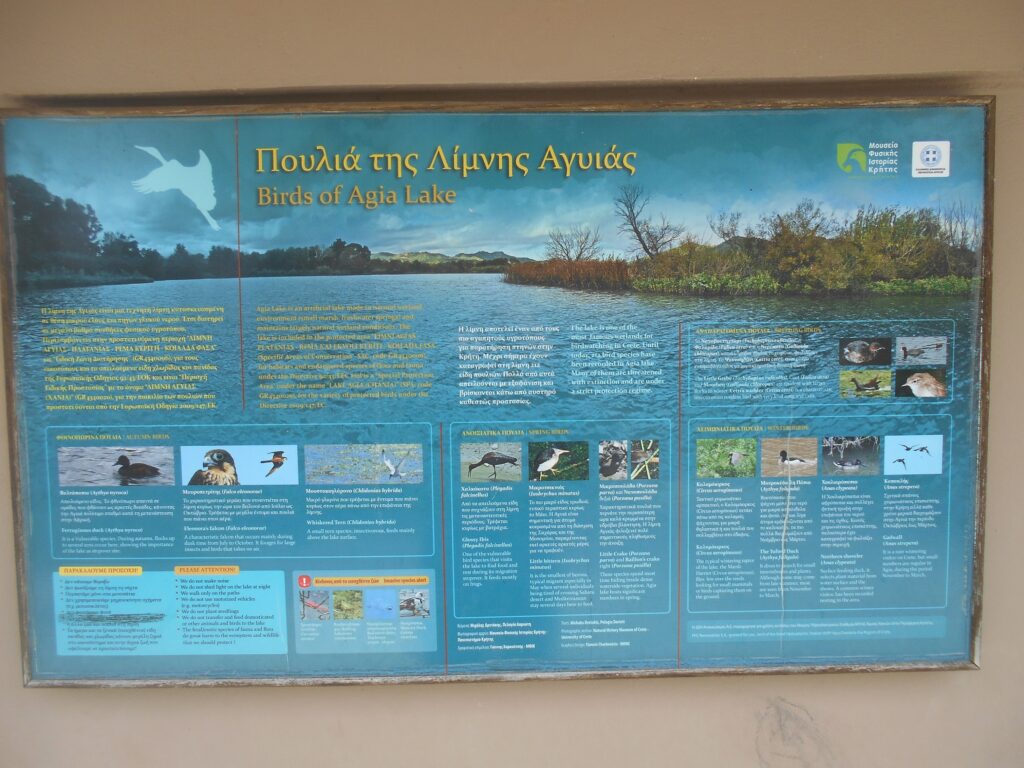
Agia Lake, just 9km SW of Chania on the road to Lakki and Omalos, is one of only two on Crete, the other at Kournas, inland from Georgioupolis. It’s an artificial lake with an area of 450 acres, originally a marsh/swamp fed by springs, and rivers from the White Mountains, built in 1923 by the Greek Electricity Supply Company in 1923 for the electrification of Chania. It was given to the local community in 2009 , and since protected (Natura 2000) by international treaties. Now it’s an important aquatic habitat, with over 200 bird species recorded, and sited on routes of bird migration between Africa and Europe.
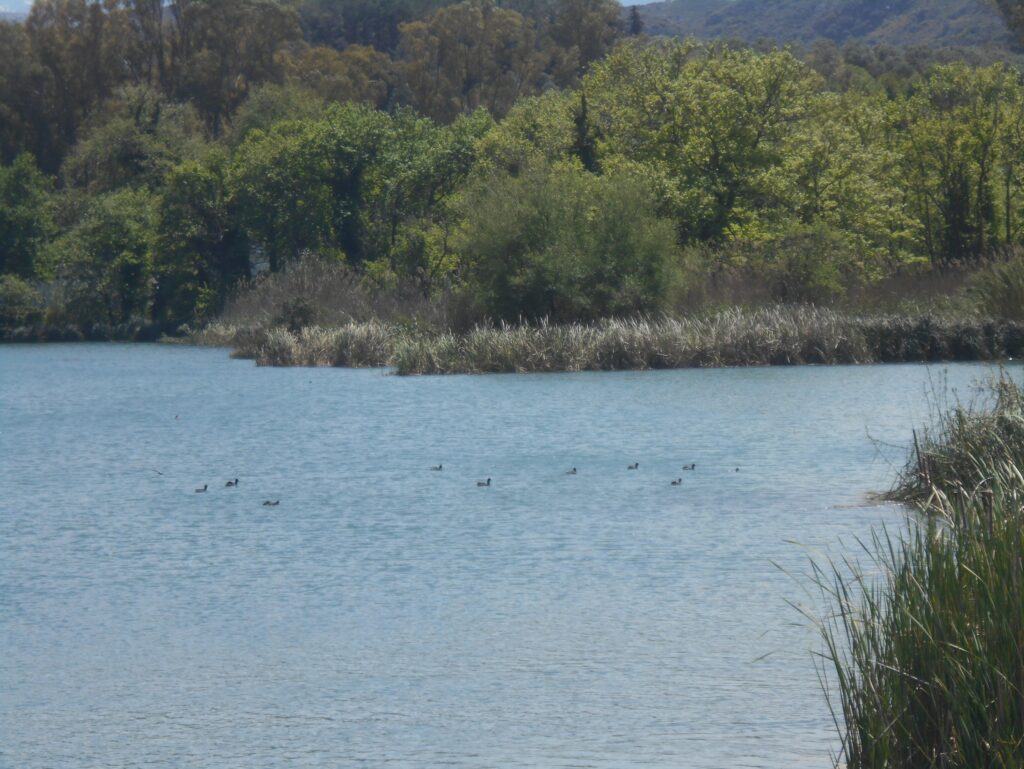
If you’re in the vicinity of Chania, there’s an easy walk of 3km around the perimeter, or just visit one of the two lakeside cafes. From Chania, take the main road to Omalos, and soon after passing Agia Prison, before reaching Agia village, turn right at a sign indicating ‘Lake Cafe’, and follow minor roads to park here. Or, from Paleochora, leave the National Road at the Platanias interchange, head inland towards Vrisses, then drive through Patelari and Kirtomados to the cafe overlooking the lake.
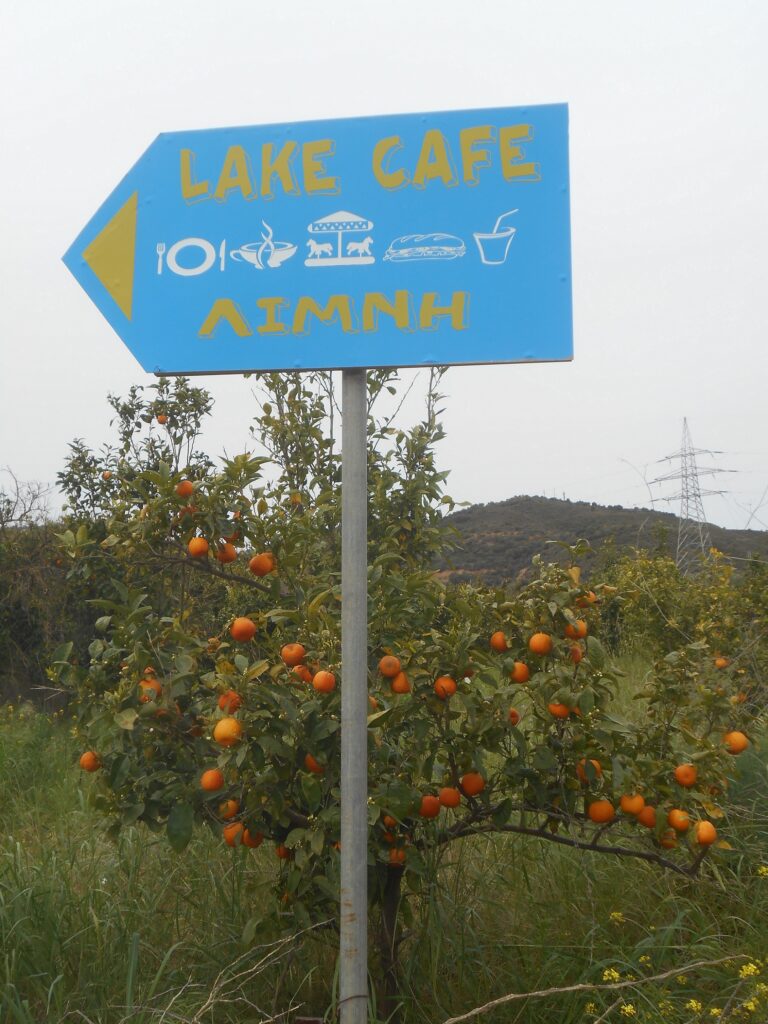
Access to the lake is through the cafe, which has a tempting menu of lunches and refreshments to enjoy before or after the walk. Tables on the lawn look across the lake to the White Mountains, and the highest summit, Pachnes, 2453m, well above 8000 ft.
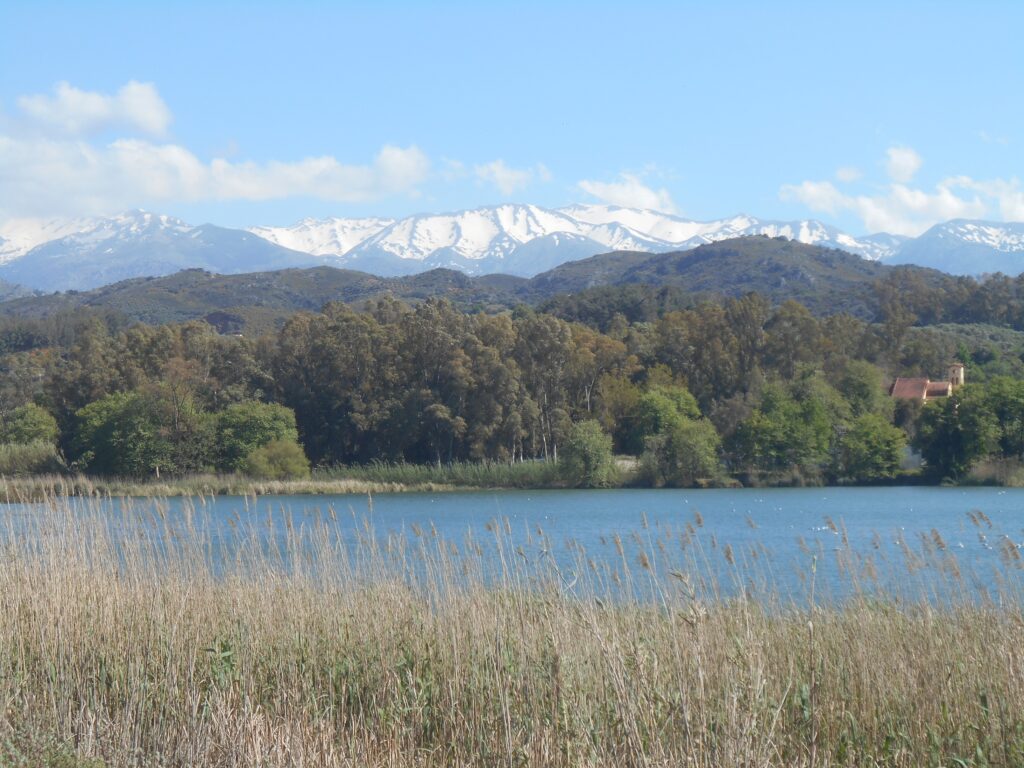
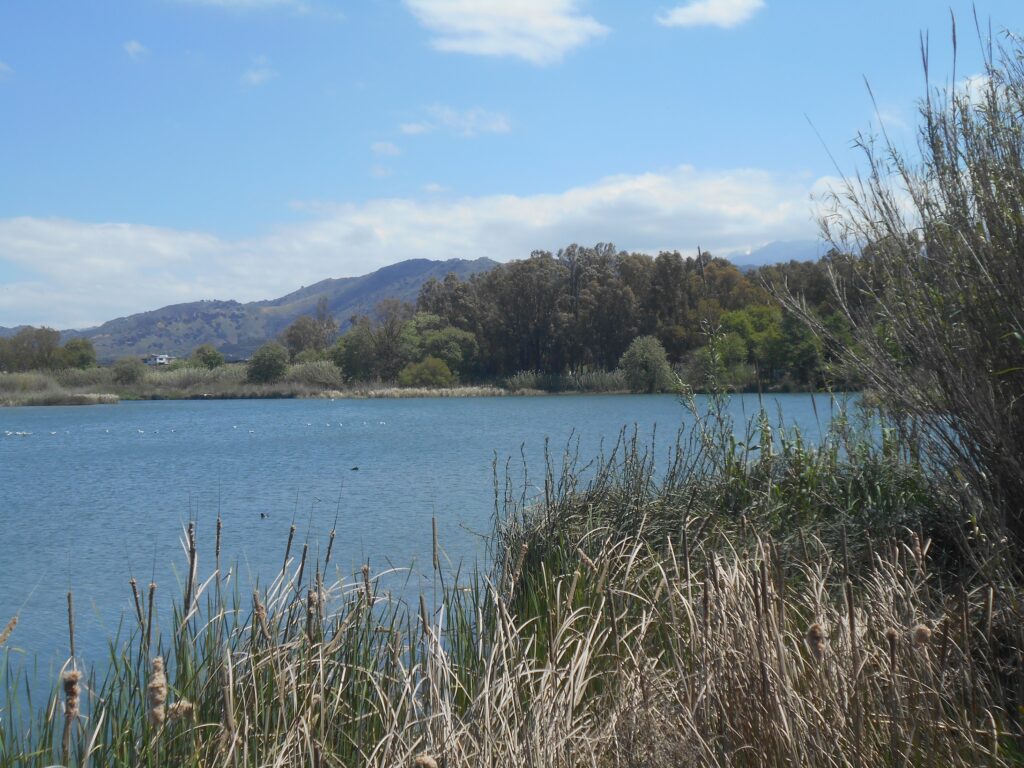
A wooden board-walk is close to, but as yet not all the way around the lake. An information board shows birds and water fowl you might see, and below this is the attractively designed Enasma cafe with alternative parking facilities. On most days there will be swans, geese and ducks close to the water’s edge, and coot, moorhen, possibly herons and egrets, many of which overwinter here.
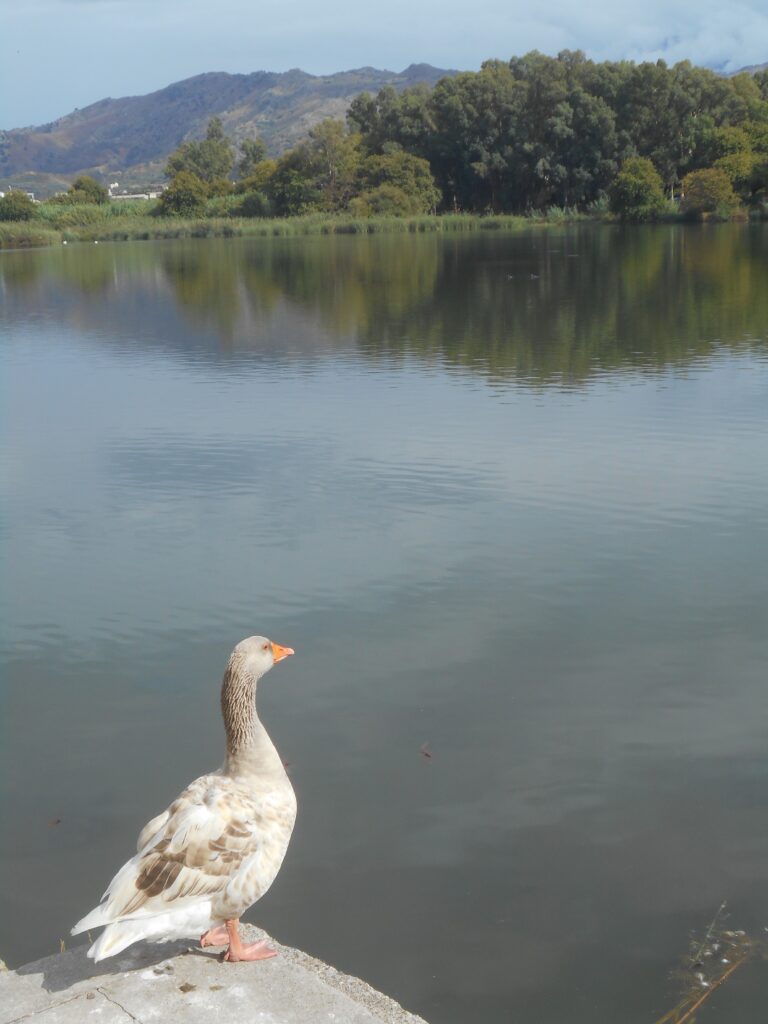
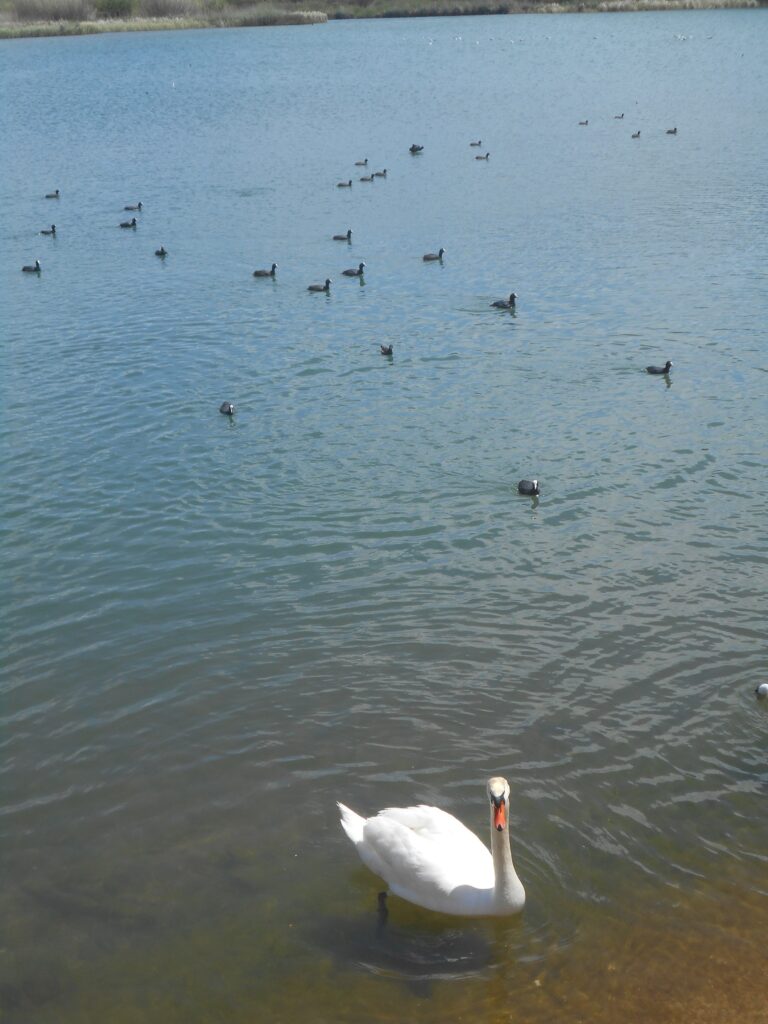
Rarer sights include crake, grebe, little bittern, stilts, marsh harrier, stork, Dalmatian pelican, and on at least one occasion, an osprey taking fish. In the shallows there are often terrapins, frogs and toads.
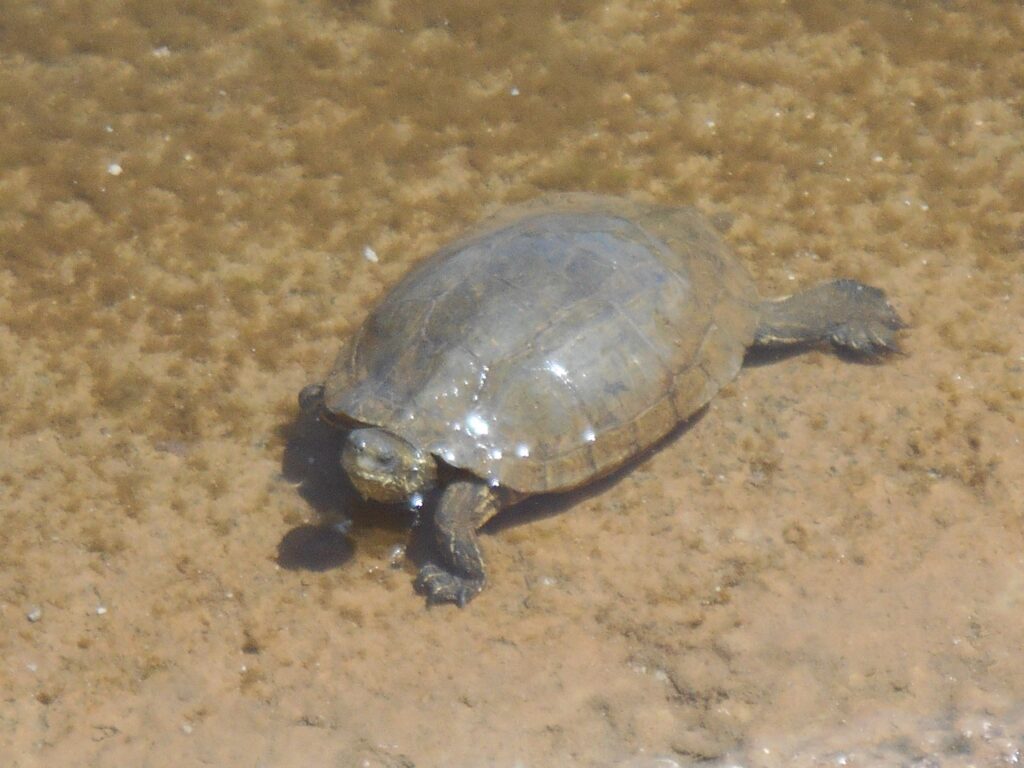
A little further is a bridge over the water outflow, below which was once the hydro-electricity station. In the scattered bushes and reedbeds you might be lucky enough, with binoculars, to spot kingfishers, reed/marsh warblers, flycatchers and other more elusive small birds.
There are picnic tables below tall eucalyptus trees, beyond which the walkway continues around the lake’s south side, with the water now some distance away. When this ends, a path leads left, but ends in undergrowth. Either reverse your route, or, to complete the circuit, turn right to meet a surfaced road, turn left for 450m to a junction, then 450m left again to the Lake Cafe, a rather uninteresting walk and with the lake out of sight.
For the enthusiastic bird-watcher, the best time to visit is in March or October, and preferably early morning or towards dusk, as migrants pass through and prepare/recover from long journies. Swallows, swifts and martins are in abundance, and, although it’s probably not their habitat, if you’re fortunate enough to see brilliantly coloured bee eaters, hoopoe and golden oriole, the sightings will remain with you for a very long time.


2 comments
Delightful! Oh to be there!
You never lost it Bob!
The days of our youth …. camping on high mountain summits …. swimming in lakes and tarns – what larks Pat, what larks ….